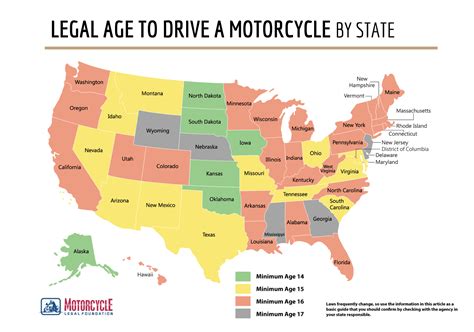The Aspiring Motorcyclist: A Guide to Legal Riding Ages
The roar of the engine, the wind in your hair, the open road stretching before you – the allure of motorcycling is undeniable. But before you can experience the freedom of the ride, you need to understand the legal requirements, specifically the minimum riding age. This can vary significantly depending on your location, and navigating these regulations is crucial before you even think about getting your license. This comprehensive guide will break down the legal riding ages across different regions and provide you with essential information to start your motorcycling journey safely and legally.
What is the Minimum Age to Ride a Motorcycle?
The minimum age to operate a motorcycle varies greatly depending on your location. There's no single global standard. Instead, regulations are set at the state, provincial, or national level. This means you'll need to research the specific laws where you live and intend to ride.
Generally, you'll find two main categories of motorcycle licenses:
- Learner's Permit or Provisional License: This allows you to ride under supervision, often with restrictions on time of day, passenger limits, and road types.
- Full Motorcycle License: This grants you full riding privileges, usually after completing a certain amount of supervised riding and passing a riding test.
The age requirements for both of these vary considerably.
What are the Legal Riding Ages in Different Regions?
It's impossible to cover every jurisdiction globally, but here are some examples to illustrate the variation:
United States: The minimum age to obtain a motorcycle license varies by state. Some states allow riders as young as 15 with a learner's permit, while others set the minimum age for a full license at 18 or even 21. It's vital to check your state's Department of Motor Vehicles (DMV) website for precise details.
Canada: Similar to the US, Canada’s minimum age for a motorcycle license is determined at the provincial level. Ages typically range from 16 to 18, often with graduated licensing programs that start with learner's permits and progress to full licenses.
United Kingdom: The UK has a graduated licensing system. A provisional motorcycle license can be obtained at 16, allowing riding of smaller motorcycles under specific conditions. A full motorcycle license is typically attainable at 17 after a required period of supervised riding and passing a test.
Australia: The minimum age for a motorcycle license in Australia also varies by state or territory. Ages generally range from 16 to 18, again with a graduated licensing system.
What Types of Motorcycles Can I Ride at Different Ages?
The type of motorcycle you can legally ride often depends on your license class. Learner's permits usually restrict you to smaller engine capacity motorcycles. Once you have a full license, you can often operate a wider range of motorcycles. Always check the specific requirements of your license class in your region.
How Can I Find the Legal Riding Age in My Specific Location?
The best resource is always your local government's Department of Motor Vehicles (DMV), Driver and Vehicle Licensing Agency (DVLA), or equivalent agency responsible for issuing driver's licenses. Their website is the definitive source of information on the legal riding ages and licensing requirements in your area.
What about Training and Safety Courses?
Regardless of your age or location, it's highly recommended to complete a motorcycle safety course before you start riding. These courses provide crucial skills and knowledge to ride safely and responsibly. Many jurisdictions offer these courses and some even require their completion before obtaining a license.
Are There Any Exceptions to the Minimum Age Requirements?
While exceptions are rare, some jurisdictions may allow younger individuals to ride motorcycles under specific circumstances, such as for agricultural purposes or specific types of licensed competitions. However, these are not common and should not be relied upon.
Conclusion
The minimum age to ride a motorcycle is not a universally consistent number. It is crucial to research the regulations specific to your location and licensing authority. Remember that safety should always be your top priority. Take the time to learn properly, complete safety training, and respect the rules of the road to enjoy the thrill of motorcycling responsibly. Always consult your local governing body for the most up-to-date and accurate information.

